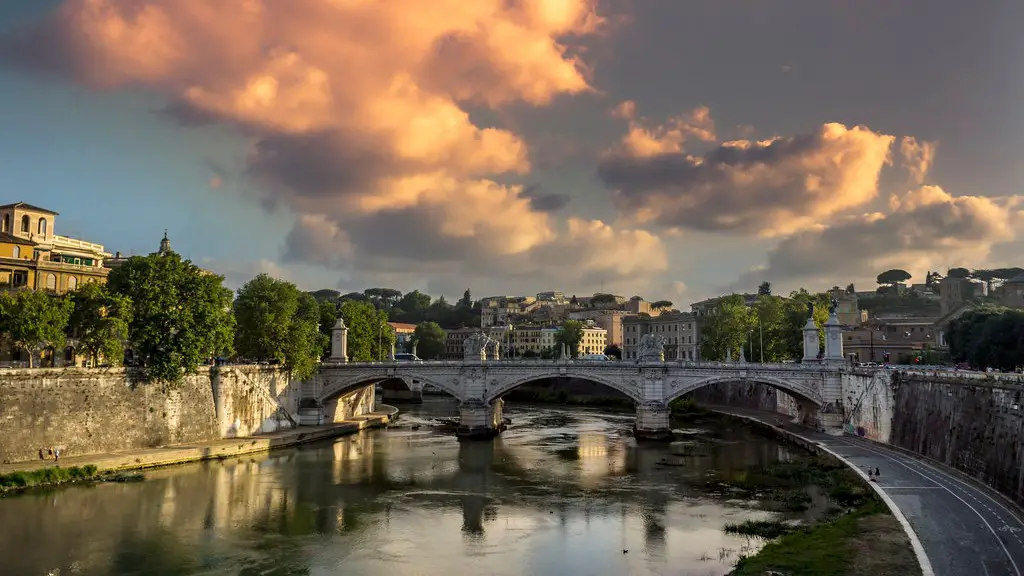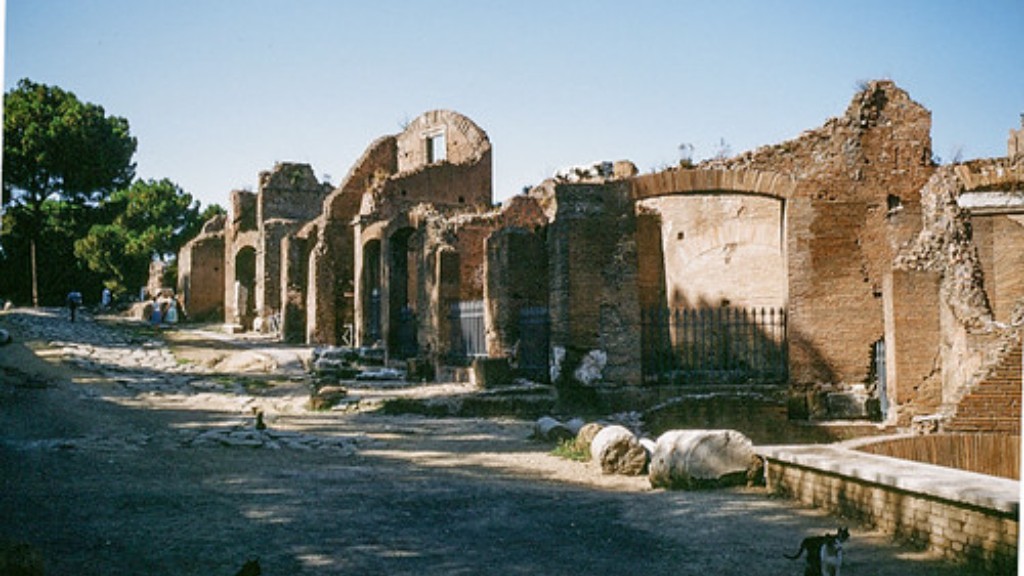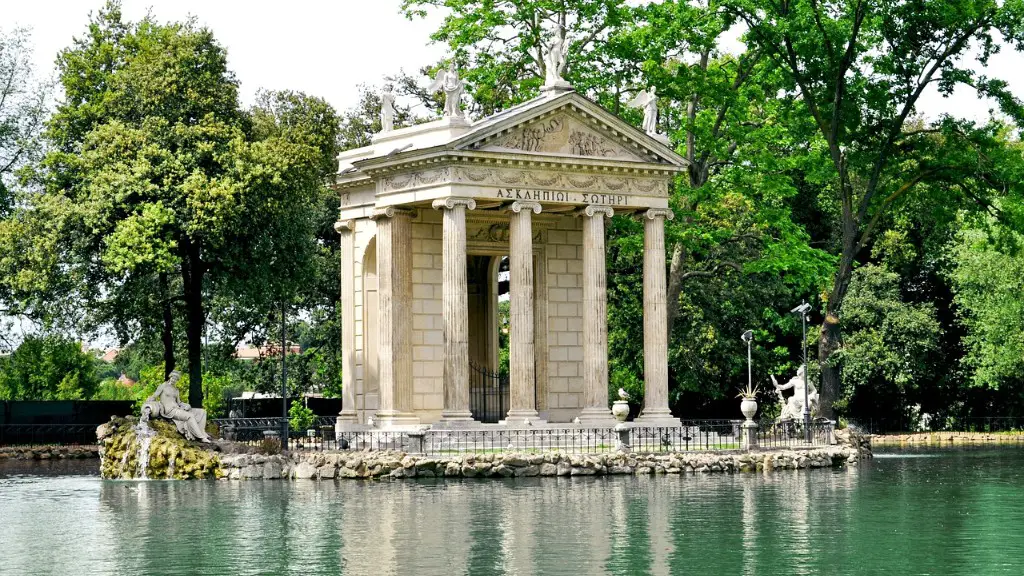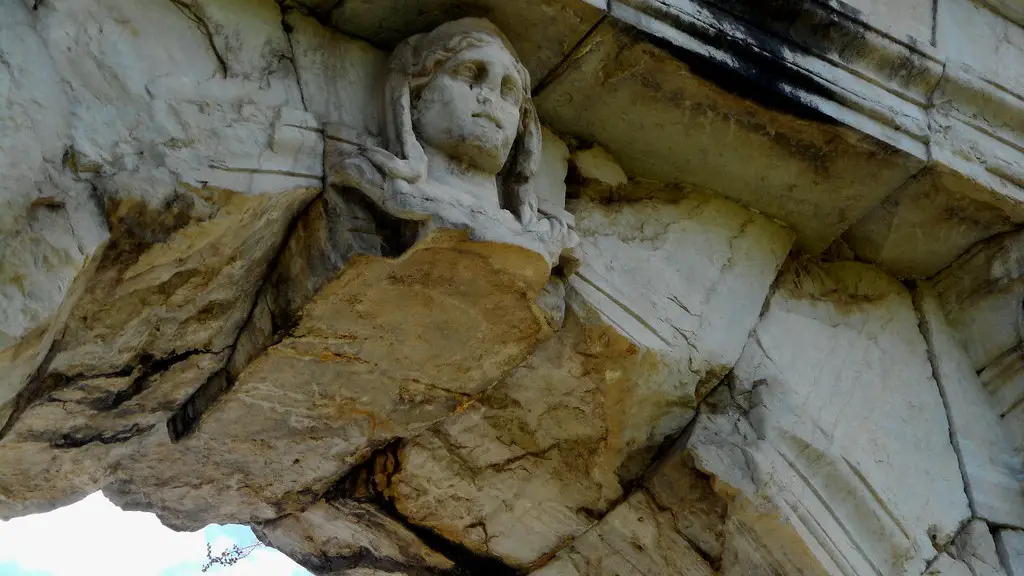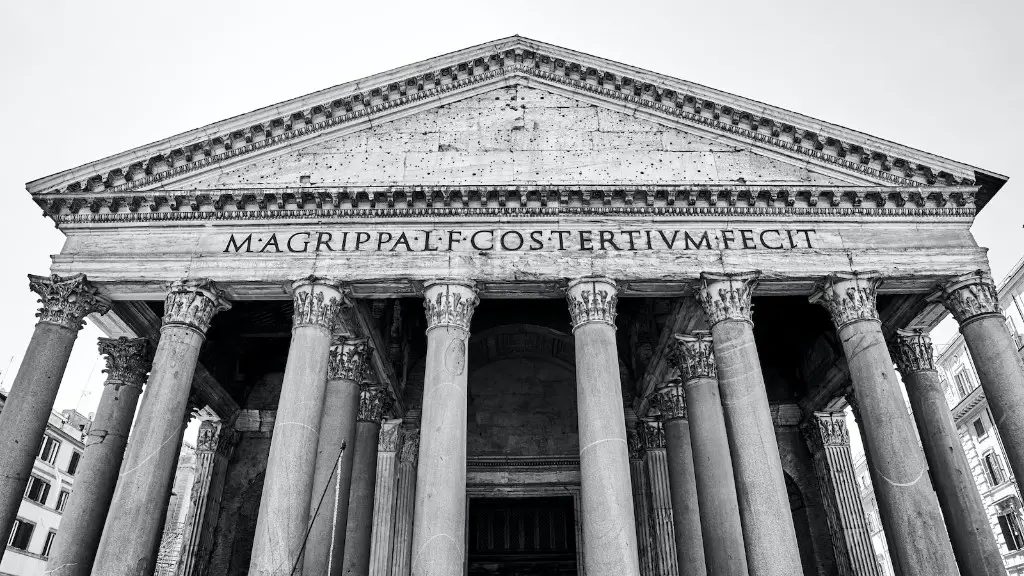It is a common belief that roads were invented in ancient Rome. While it is true that Roman engineering innovations enabled the development of roads and highways, they actually had their precedents in the Middle East and Egypt, who built the first networks of roads in the area. Nevertheless, it was the Romans who perfected the design and engineering of this type of infrastructure, and the roads and highways constructed by them had a tremendous impact on their economy and culture. In fact, the entire world owes much of its current transportation capabilities to the Roman roads.
The Roman highway system was incredibly efficient and allowed them to quickly move goods and resources. Materials such as timber, stone, and metal were moved large distances to build the roads and to support the construction of cities and military fortifications. Citizens and soldiers were also able to quickly traverse much of the Mediterranean area, allowing them to respond quickly to perceived threats and to rapidly expand their empire. Ultimately, the roads enabled much of civilization to effectively flourish.
However, understanding who exactly invented roads and highways in ancient Rome is slightly more complicated. According to historians and geographers, the first so-called “Roman road” was constructed in 312 BC by the Roman Consul Appius Claudius Caecus. These roads were meticulously planned and executed, following a strict engineering principles and constructed of a variety of materials. This included lava stones which were used to create a solid and durable base, as well as wooden and stone inlays. The maintenance of these roads was very much taken into account and they were constructed with built-in channels to allow excess water to run off.
The engineering of these ancient roads was nothing short of brilliant. For example, to ensure that the roads were level, the Romans even devised a system of horizontal and vertical markers called “cursus publicus”. These markers were placed across the roads and helped workers to precisely level the road surface. Furthermore, the Romans also incorporated drainage systems to help reduce water damage, and constructed bridges over streams to allow passage. These elements were usually implemented long before the actual paving process.
What separated the Roman road system from previous designs was the adaptation of durable materials and engineering techniques. The establishment of their roads enabled the Roman Empire to unify the Mediterranean world and provide economic stability. Most notably, the famous “Appian Way” or “Regina Viarum” provided as a reliable route between many of the largest cities in Italy and opened up trade and transportation along the Mediterranean.
To this day, roads and highways remain a cornerstone of modern mobility. The principles and design of Roman roads were equally as applicable to the current infrastructure and are still seen in many of the highways constructed in both the United States and Europe. In this way, the roads and highways of ancient Rome can still be found throughout the world, a testament to the ingenuity of the Romans and their lasting legacy.
Rome and Economic Growth
The invention and engineering of roads and highways were just one part of the Roman Empire’s economic boom. Consequently, Rome’s acquisition of much of the Mediterranean area allowed them to monopolize many of the trade routes that had previously been shared amongst tribes and country’s. This lead to increased profit margins that allowed Rome to reinvest in the development of new infrastructure, such as the various roads and highways.
Subsequently, these roads enabled Rome rapid expansion into all of Europe, the Near East and eventually Africa. This lead to an influx of goods, resources and wealth to the Roman Republic and allowed for further investment in infrastructure and technology. This period, combined with many of the Roman military innovations, solidified Rome’s place as a world superpower.
One of the most impressive roads in this period of expansion was the Via Appia. This road was divided into sections, with each section consisting of many smaller roads and pathways that often intersected. This network of roads enabled both trade and communication between Rome and the surrounding provinces, allowing them to quickly gain control of the region within a few years.
Furthermore, many of these roads grew to become avenues and later still, full on cities. An example of this can be seen in the city of Ostia, which was founded as a small trading post bordering the Tiber river. As the road system of Rome expanded, so too did the city, eventually becoming one of the largest cities in the entire Roman Empire.
Rome’s Cultural Impact
The economic and military successes that arose from the construction of roads and highways had a massive cultural impact on the Roman Empire. During this period, public facilities, such as baths and arenas, were opened which allowed citizens to congregate and engage in activities. Rome also witnessed its greatest development in scientific and medical advancements, many of which were due to the improvements to transport and communication. This created unprecedented opportunity for the common citizen and ensured a standard of living that was not seen in any other ancient region.
Roads also had a tremendous impact on Rome’s legal system and allowed for the spread of its laws across the region. It is quite fascinating to note that much of the state written civilizations of the world today still reference the Roman codes of law. With this, the concept of roads in civilisation has come to represent both the physical and the metaphorical highways taken to ensure the persistence of its legal system and culture.
Roads were also essential for the spread of Christianity across the region. This symbolism is still quite relevant in both Christianity and many of the other world religions today. The concept of a road being representative of a journey of faith is extremely powerful and inspiring. Much of this was experienced firsthand by the citizens of Rome and many of the stories and myths associated with roads and highways still resonate in the same manner today.
The Mathematics Behind Ancient Roads
The construction of the roads and highways of ancient Rome required a lot of mathematical effort. For example, the curvature of the roads had to be precise to ensure an efficient route. Furthermore, certain roads were laid out using a system of straight lines and circular arcs, with the depth of the arcs being controlled by mathematical principles.
In addition, the Romans also had to carefully plan and calculate the geometry of many of the bridges used. This was especially important because many of the bridges over the rivers or lakes of Rome had to have a curved shape in order for the ships to pass beneath them. To accomplish these calculations, engineers had to use trigonometry and other advanced mathematical formulas.
This dedication to mathematics enabled the Roman road system to be one of the best in the world during its time. In fact, many of the principles used by the Romans are still being applied to modern road construction, showing the lasting legacy of their engineering techniques. Without the use of mathematics, the construction of the roads of Rome would have been impossible.
Modern Adaptations of Roman Highway Engineering
The lasting legacy of the Roman Empire and their highway engineering can still be seen today. The concept of having a specific highway code has become the standard across the world, with the majority of all modern highways essentially having the same design, such as having two lanes in each direction, separators and medians, as well as signposts and speed limits.
Some cities and countries have also incorporated some of the Roman engineering principles into their highway system. One example of this can be seen in Italy which still employs the same system of markers used by the Romans to equip its highways. Similarly, some of the bridges present in the United States have adopted some of the design features used by the Romans, such as arches and curves.
Finally, modern engineering techniques have also enabled the possibilities associated with the development of roads and highways. This includes materials such as asphalt and concrete, which are much more resistant and durable than the materials used by the Romans. Additionally, modern engineering techniques have allowed roads to be constructed faster and more efficiently.
Construction Challenges
Despite Rome’s great engineering innovations,the construction of roads was not without its issues. For one, the materials used by the Romans were typically quite expensive. This made it difficult to build a continuous system of roads and highways, as Roman officials typically wanted to spend their money on military campaigns and the maintenance of city walls.
In addition, the vastness of the Roman Empire also presented geographical challenges to the construction of roads and highways. This included everything from obtaining materials from distant locations to being able to build across difficult terrain. Nonetheless, the Romans were able to overcome these issues, with some roads being built over mountains and other extremely challenging areas.
The construction of roads and highways in ancient Rome was an incredible feat of engineering and still has an impact on society today. The Romans not only designed an efficient network of roads and highways, but also established a foundation for modern transportation. As such, we can easily appreciate the genius and dedication of their engineers even today.
